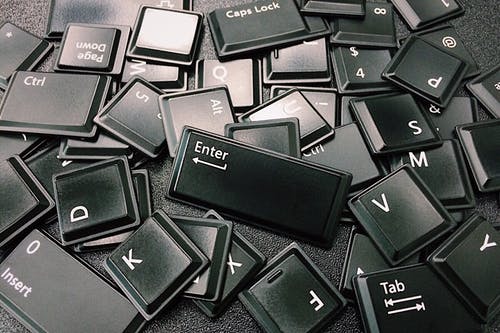What are Brackets?
There are a few symbols that can technically be considered brackets, which are used as punctuation marks. Written English has four types of brackets and each pair of marks has its own usage rules. Here are a few to consider.
Round Brackets ( )
Round brackets ( ), also known as parentheses, especially in American English, are the most commonly used in written English. A pair of round brackets is used when a writer wants to add information to a sentence that will give greater detail to the information presented, but which is not essential to the meaning of the sentence.
- The round brackets separate off the information that isn’t essential; if you remove the bracketed words the sentence still makes sense.
Example: Angela agreed (after a quick call) that she would attend the party.
- Round brackets can also be used to add a comment by the person writing.
Example: They were hoping to depart (even though the train was delayed).
In this case, the bracketed information is not part of the main subject of the sentence.
Example: The mother (and her children) arrived for the appointment.
- Short translations in unquoted text can be placed in round brackets.
Example: Her knowledge of French is limited to merci (thank you) and au revoir (goodbye).
- In some works, a person’s year of birth and year of death are provided in round brackets when the person is first mentioned.
Example: Galileo Galilei (1564-642) was an Italian polymath.
Note: Words placed in round brackets can often be set off with commas instead, and in some cases, by em-dashes.
Square Brackets [ ]
Square brackets [ ] are known simply as brackets in American English, and in some instances as box brackets. They are extremely useful to writers and editors, serving a range of purposes. The most popular of which is to enclose explanatory matter that one adds in editing the work of another writer. The square brackets indicate that an alteration has been made in the original text.
- Square brackets enclose words added by someone other than the original writer or speaker. This is usually done to clarify a point or meaning. The words that are being added to an original quote are always placed within square brackets, and not round brackets (parentheses). This tells your readers exactly how you have altered the original.
Example:
Original: He said, “I removed their equipment from the farm.”
Amended: He said, “I removed their [obsolete] equipment from the farm.”
Example: Dr Gordon [the cardiologist] was not in attendance.
- In quoting a passage in a written piece, it is often necessary to insert information that was provided elsewhere in the original text.
Example: I have a good idea what she [J Austen] had in mind, but societal values were not as accommodating then.
- If it’s necessary to change the original capitalisation of a word or provide a word in order to make a quotation fit grammatically into the new text, square brackets are used.
Example:
Original: Mary was outrageous, the belle of every ball.
Quoted form: According to the society columnist, “[She] was outrageous, the belle of every ball.”
- Use square brackets as brackets within brackets. This is often seen with bibliographic references. Example: (For more on the topic, see Longmans Companion to English Literature [2012].)
- If the word in a quotation is archaic, colloquial or used in a sense that may not be familiar to readers, the editor may provide an explanation in square brackets.
Example: John prefers to wear undergruts [underpants] depicting cartoon characters.
- Square brackets are also used for translations in quoted text.
- Square brackets are used to enclose ‘sic’ and italicise it. The Latin term ‘sic’ is used to indicate that something written is intentionally left in the original form, which may be incorrect factually or in terms of spelling.
Example: The journalist wrote, “Their [sic] were seven hostages.”
- Square brackets can be used to show the pronunciation of a word.
Example: She mispronounced ‘ambience’ [ahm-b’enz].
Curly Brackets { }
Curly brackets { }, or (curly) braces in American English, have limited usage in written English, mostly being used for poetry or music. They are used extensively in mathematics, physics and coding.
- They are used when a writer wanted to create a list of items that are all equal choices.
Example: The gardening instructor said, “Gather your equipment {spade, fork, shovel, knife, shears} and follow me.”
- They are also used in writing or printing for the purpose of uniting together two or more lines, words, staves of music, etc.
This punctation mark is not used much in ‘everyday’ writing or ‘normal’ text but does appear in technical and scientific papers and textbooks, requiring specialised writing, editing and proofreading skills.
Angle[d] Brackets < >
Angle(d) brackets < >, also known as (left and right) chevrons or carets, have very limited use in writing but are used in copy editing and in other technical applications (such as mathematics and coding).
The most common use for angled brackets is for placing URLs, email addresses and images into text. In copy editing they are used to set off highlighted material, as place markers, and to indicate certain instruction to the book designer.
Final Thoughts
- If brackets (round or square) are used at the end of a sentence, the full stop should be placed outside, as the final punctuation.
Example: John and his wife decided to retire to the West Coast (where their children live).
- When content within brackets (round or square) occurs in the middle of a larger sentence, the surrounding punctuation should be placed outside the brackets, exactly as it would be if the bracketed content were not there.
Example: We confirmed his graduation (Harvard, class of 2010), but his CV needs scrutiny.
- Note that all bracket types serve different purposes in mathematics, physics and computer coding.
If you require assistance in polishing your manuscript or refining your documents, please contact Renell at Proof Perfect NZ. Email renellj@proofperfect.co.nz or call 029 1230 158.











